Bien avant de me lancer dans la photographie, j'étais fasciné par la faune et la flore. Enfant, je me souviens d'avoir dressé des listes de tous les animaux que j'avais repérés pendant les vacances en famille. Vingt-cinq ans plus tard, alors que je poursuivais ma carrière de photographe professionnel de la nature, la faune est restée l'un de mes sujets de prédilection. Dans cet article, je vais partager mes conseils pour la photographie animalière avec le Tamron 150-500 mm, un objectif qui est devenu l'un de mes outils de prédilection. Grâce aux progrès de la technologie des appareils photo et des objectifs, il n'a jamais été aussi facile de capturer des images nettes et intimes d'animaux sauvages - et le Tamron 150-500mm F/5-6.7 Di III Le VC VXD (modèle A057) joue un rôle important à cet égard.
Texte et images de Don Mammoser
Dans cet article, vous apprendrez à maîtriser ces techniques de photographie animalière :
- Prenez des photos d'animaux sauvages d'une grande netteté grâce à l'objectif Tamron 150-500 mm.
- S'approcher des animaux et les photographier sans les effrayer.
- Créez des compositions puissantes avec un cadrage intelligent et un contrôle de l'arrière-plan.
- Anticipez le comportement des animaux pour prendre des photos uniques.
- Choisissez la bonne lumière, la bonne saison et les bons réglages pour des photos inoubliables de la faune et de la flore.
Pourquoi le Tamron 150-500 mm change la donne pour les animaux sauvages
Au fil des ans, les appareils photo et les objectifs ont considérablement évolué et les équipements actuels offrent aux photographes animaliers des possibilités sans précédent. Le Tamron 150-500mm F/5-6.7 Di III VC VXD (modèle A057) se distingue par sa légèreté, sa plage de zoom impressionnante, sa mise au point rapide et sa netteté exceptionnelle.
Voici en quelques mots les raisons pour lesquelles je fais confiance au Tamron 150-500mm :
- Compact et léger (seulement 3,8 livres)
- Autofocus rapide et précis pour les sujets en mouvement rapide
- Une netteté et une qualité d'image incroyables
- Portée de zoom parfaite pour garder une distance de sécurité avec les animaux sauvages
Conseils pour la photographie d'animaux sauvages avec le Tamron 150-500mm
Capturer de superbes images d'animaux sauvages demande plus que de la chance - il faut de la patience, de la planification et le bon équipement. Au fil des ans, j'ai développé un ensemble de stratégies qui m'aident à créer des photos d'animaux sauvages de meilleure qualité, plus nettes et plus percutantes. Grâce aux fonctions avancées de l'objectif Tamron 150-500 mm, ces techniques sont devenues encore plus faciles à mettre en œuvre. Ci-dessous, je partage mes meilleurs conseils pour la photographie d'animaux sauvages avec le Tamron 150-500 mm afin de vous aider à tirer le meilleur parti de votre temps sur le terrain et à rentrer chez vous avec des images dont vous serez fier.
Voici quelques-uns de mes conseils pour la photographie d'animaux sauvages avec l'ultra-téléobjectif Tamron 150-500 mm sur mes appareils photo Sony.
CONSEIL 1 : Une réussite concrète : Photographier le mouflon d'Amérique
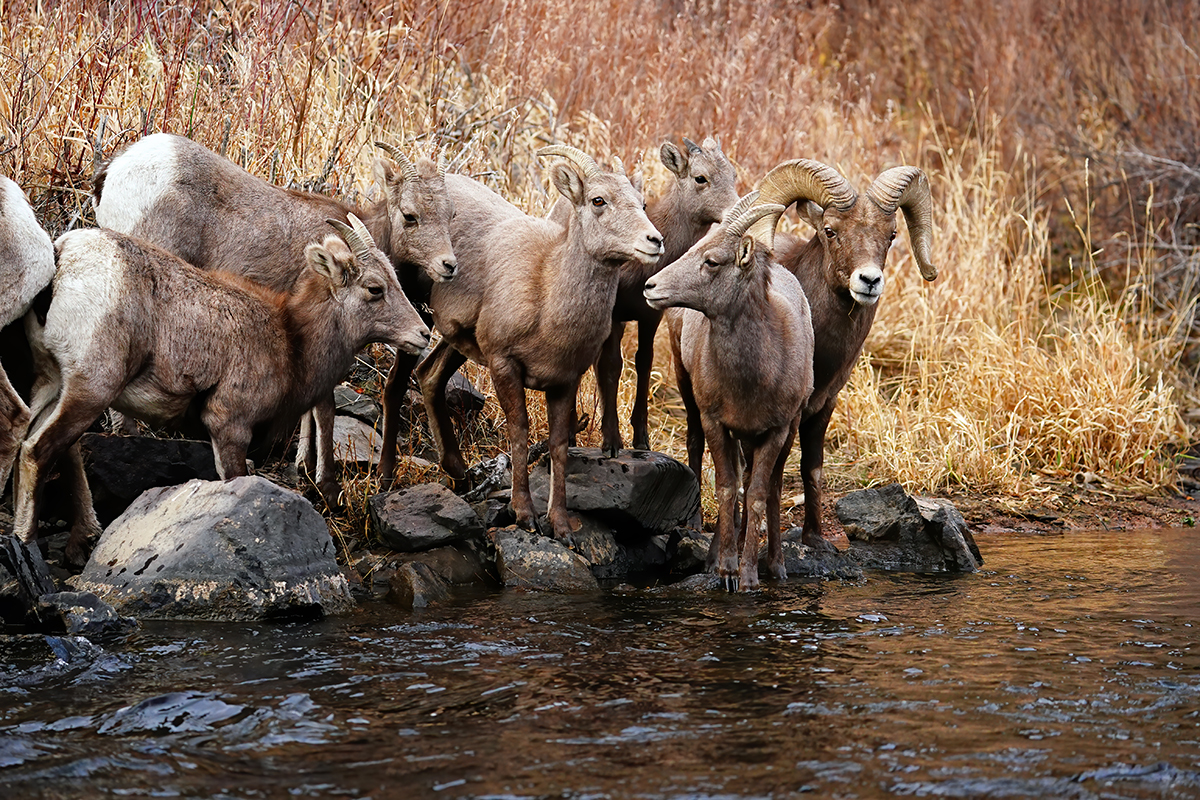
Une sortie mémorable a parfaitement illustré l'importance du bon objectif. J'ai ciblé une zone d'hivernage connue pour les mouflons dans le Colorado, accessible uniquement en randonnée ou en VTT. Naturellement, j'ai emporté le Tamron 150-500 mm, car sa légèreté rendait le trajet à vélo plus facile. Lorsque j'ai localisé le troupeau, la plage de zoom m'a permis de capturer de belles images sans alarmer les animaux.
Conseils rapides pour les rencontres avec la faune :
- Choisissez un équipement léger pour les endroits éloignés.
- Utilisez le zoom pour rester à distance et éviter de déranger la faune.
- Observez les moments où les animaux lèvent la tête ou se séparent pour obtenir des compositions plus fortes.
CONSEIL 2 : Maîtriser l'anticipation : Saisir le mouvement et l'action
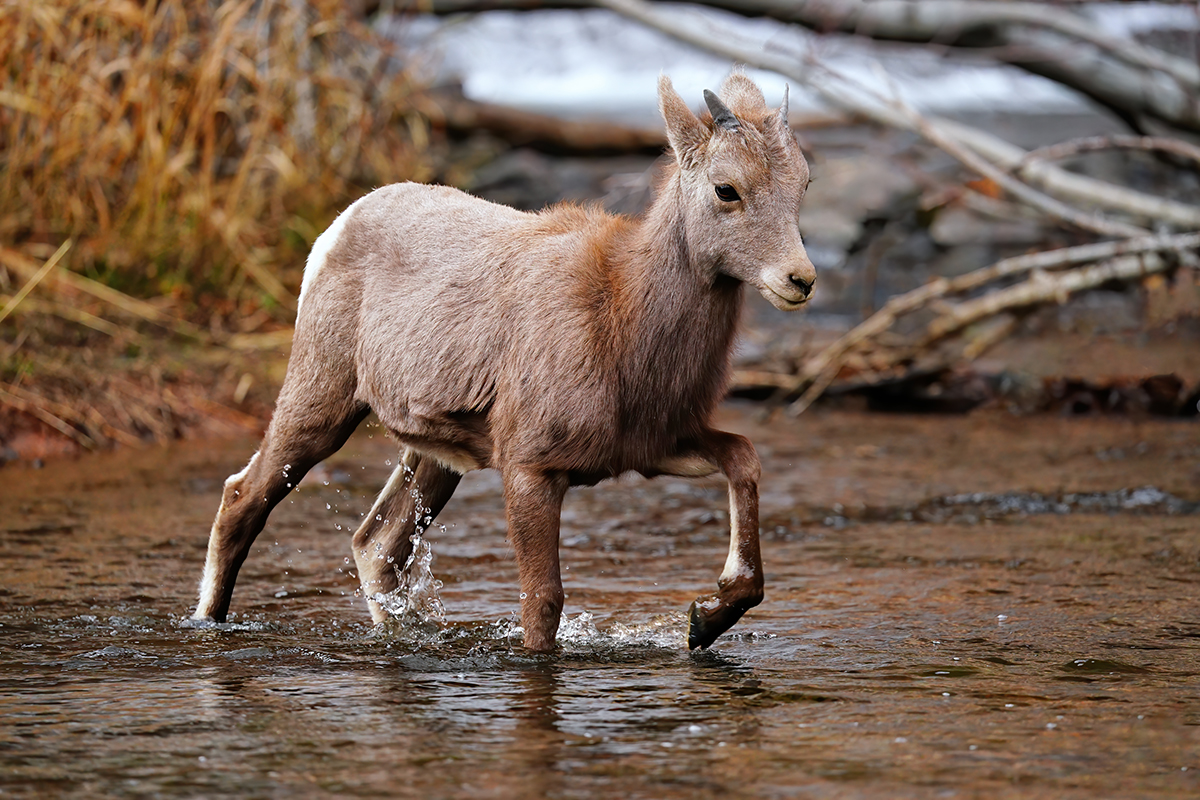
En photographie animalière, le choix du moment est primordial. Après avoir photographié le troupeau de mouflons, j'ai attendu patiemment et anticipé leur comportement. Lorsqu'ils ont traversé une rivière un par un, j'étais prêt à figer le moment parfait avec une vitesse d'obturation rapide et l'autofocus réactif de l'objectif Tamron.
L'essentiel de la photographie d'action :
- Anticipez toujours le prochain mouvement du sujet.
- Utilisez des vitesses d'obturation rapides pour figer l'action de manière nette.
- Concentrez-vous sur la capture des mouvements naturels et de la séparation entre les animaux.
CONSEIL 3 : Se baisser : un changement de cap pour la photographie d'oiseaux
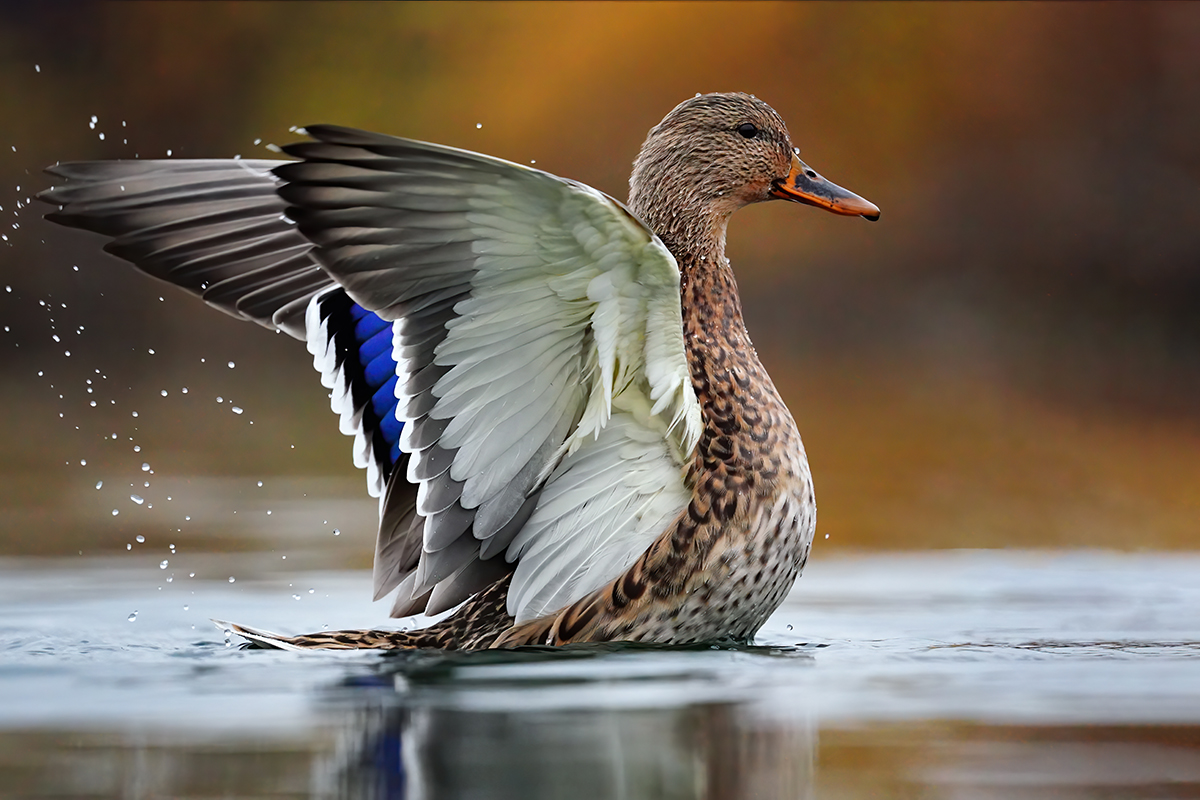
Pour photographier des oiseaux aquatiques comme les canards, la clé est de se mettre au niveau des yeux du sujet. J'utilise l'écran rabattable de mon appareil photo Sony et je le place sur une nacelle au sol ou sur ma jambe tendue lorsque je suis assis au bord du lac. Grâce à la légèreté du Tamron 150-500 mm, cette approche est plus facile et plus confortable.
Dans mes deux images de canards (ci-dessus et ci-dessous), le fait de se baisser a permis de créer des perspectives intimes et des arrière-plans étonnants remplis de couleurs automnales.
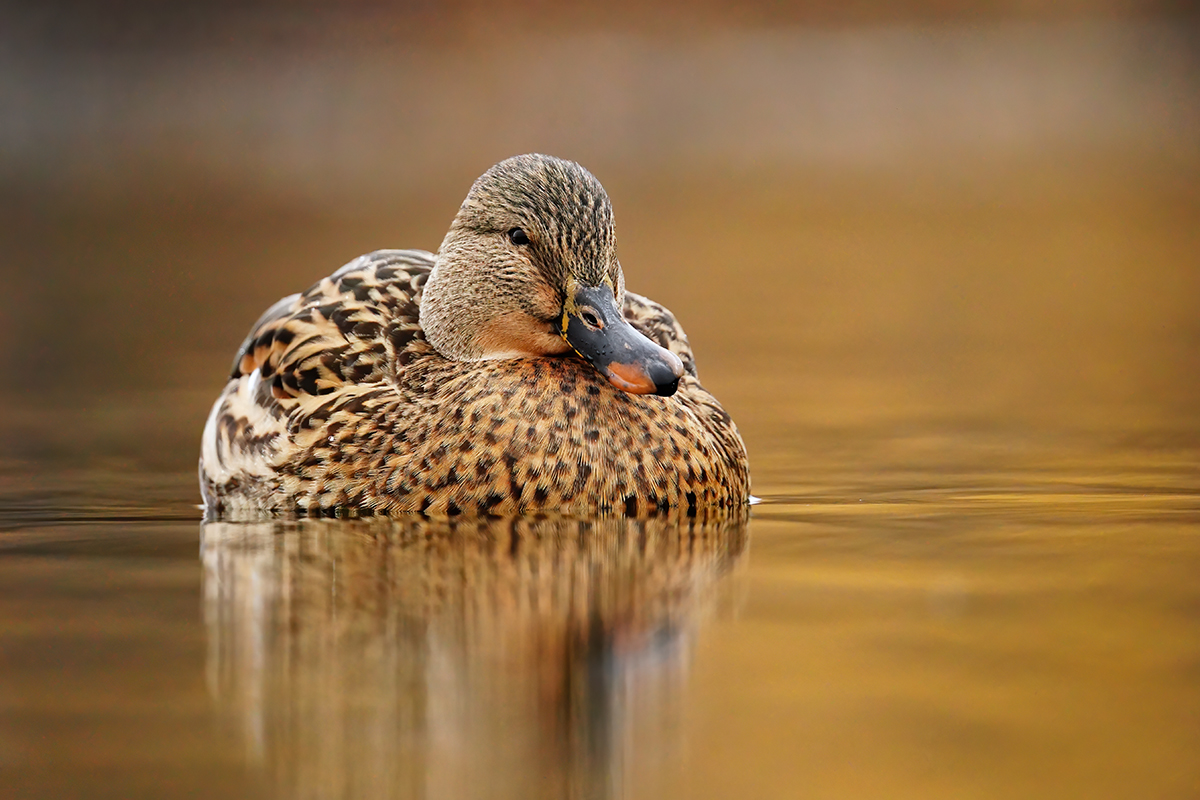
Conseils rapides pour la photographie en contre-plongée :
- Prenez toujours la photo au niveau des yeux du sujet.
- Utilisez un pod de sol ou asseyez-vous au ras du sol.
- Utilisez des arrière-plans colorés pour renforcer l'attrait de l'image.
CONSEIL 4 : Faites coïncider vos prises de vue d'animaux sauvages avec le calendrier de la nature
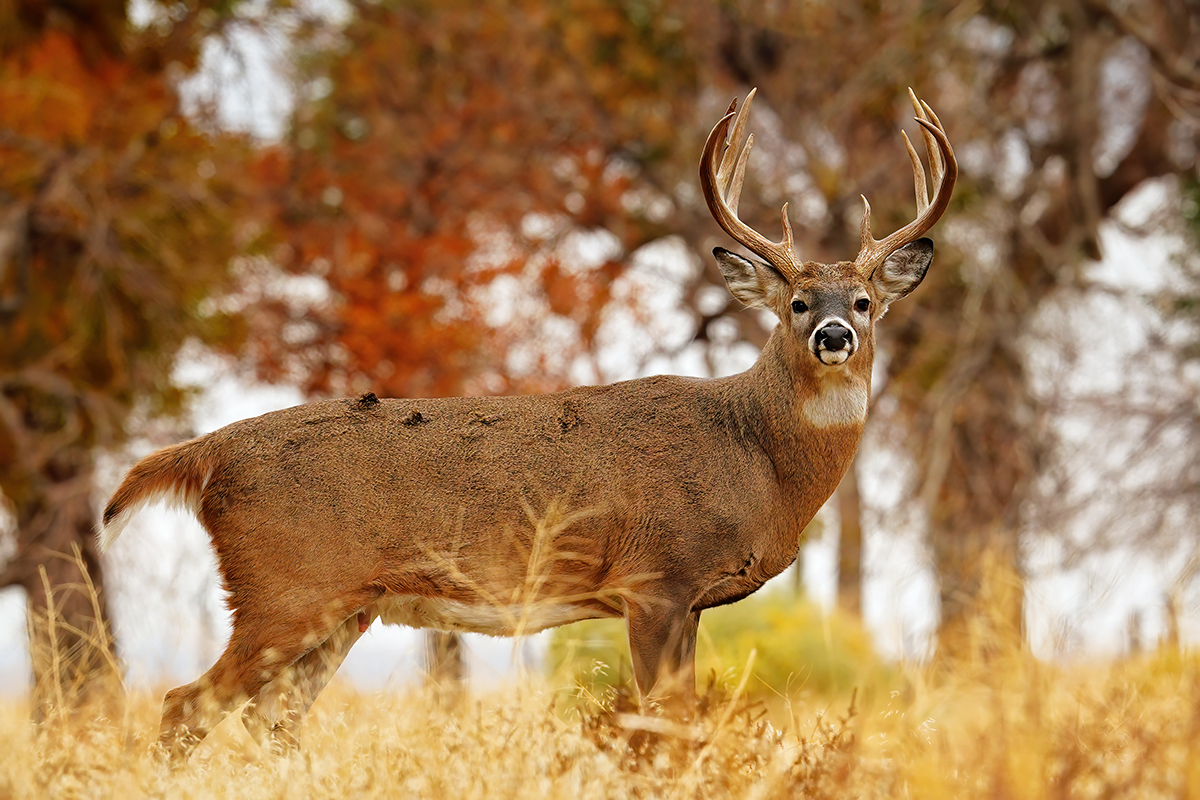
Un autre aspect crucial des conseils pour la photographie animalière avec le Tamron 150-500 mm est la prise de vue en fonction des saisons. Par exemple, les impressionnants cerfs de Virginie en pleine forme apparaissent pendant le rut automnal, ce qui fait de l'automne le moment idéal pour photographier les mâles majestueux.
Je me sers souvent de mon véhicule comme d'un affût mobile, en traversant des refuges pour animaux sauvages. Le zoom polyvalent du Tamron 150-500 mm me permet de réagir instantanément aux scènes, en ajustant mon cadrage sans avoir à quitter la voiture et risquer d'effrayer les animaux.
Conseils pour la photographie saisonnière de la faune et de la flore :
- Le printemps est idéal pour photographier les bébés animaux.
- L'automne est le meilleur moment pour capturer des mâles forts et en bonne santé.
- Utilisez votre véhicule de manière créative comme cache pour minimiser les perturbations.
CONSEIL 5 : Les espèces communes peuvent aussi briller
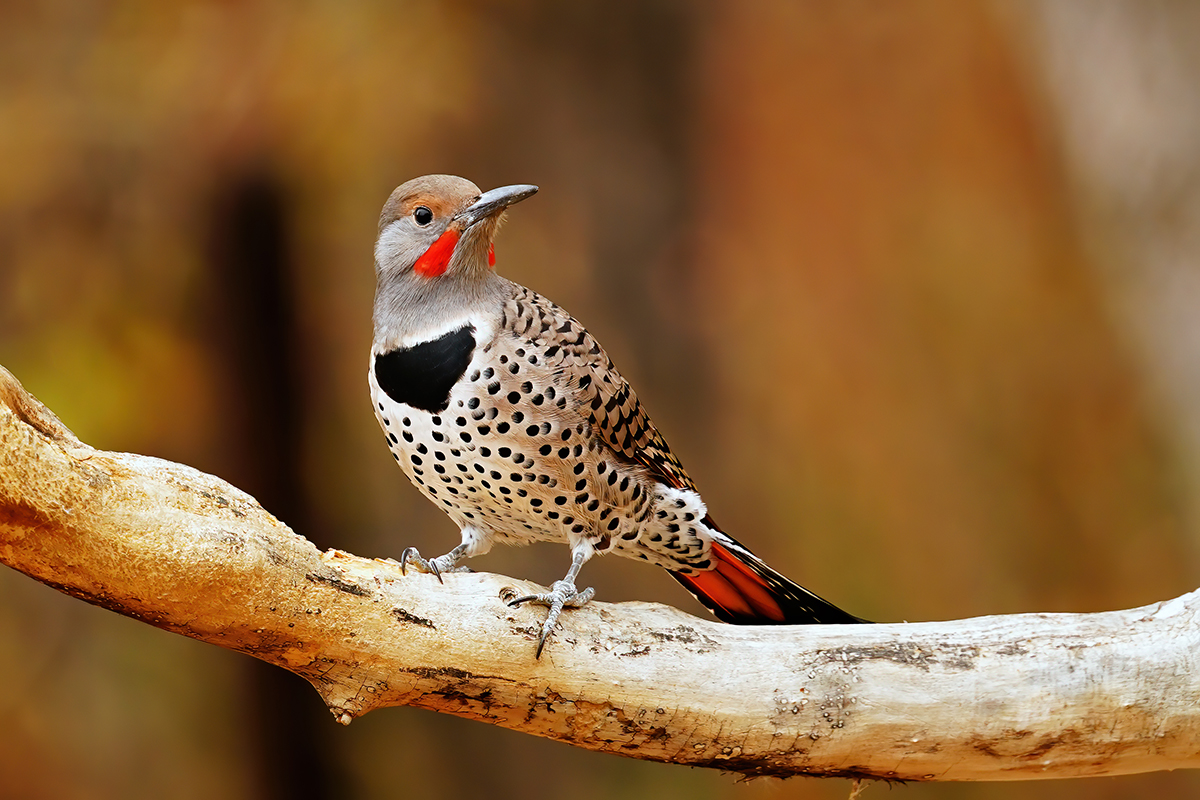
Toutes les images primées n'ont pas besoin d'un animal rare. Même des espèces communes comme le pic épeiche (ci-dessus) et l'écureuil (ci-dessous) peuvent produire des photos époustouflantes si vous appliquez des techniques de photographie clés. En utilisant le Tamron 150-500 mm, j'ai capturé des détails incroyables sur les plumes d'un pic épeiche et un charmant portrait d'un écureuil en pleine course. Le placement réfléchi de l'appareil photo et le contrôle de l'arrière-plan ont fait toute la différence.
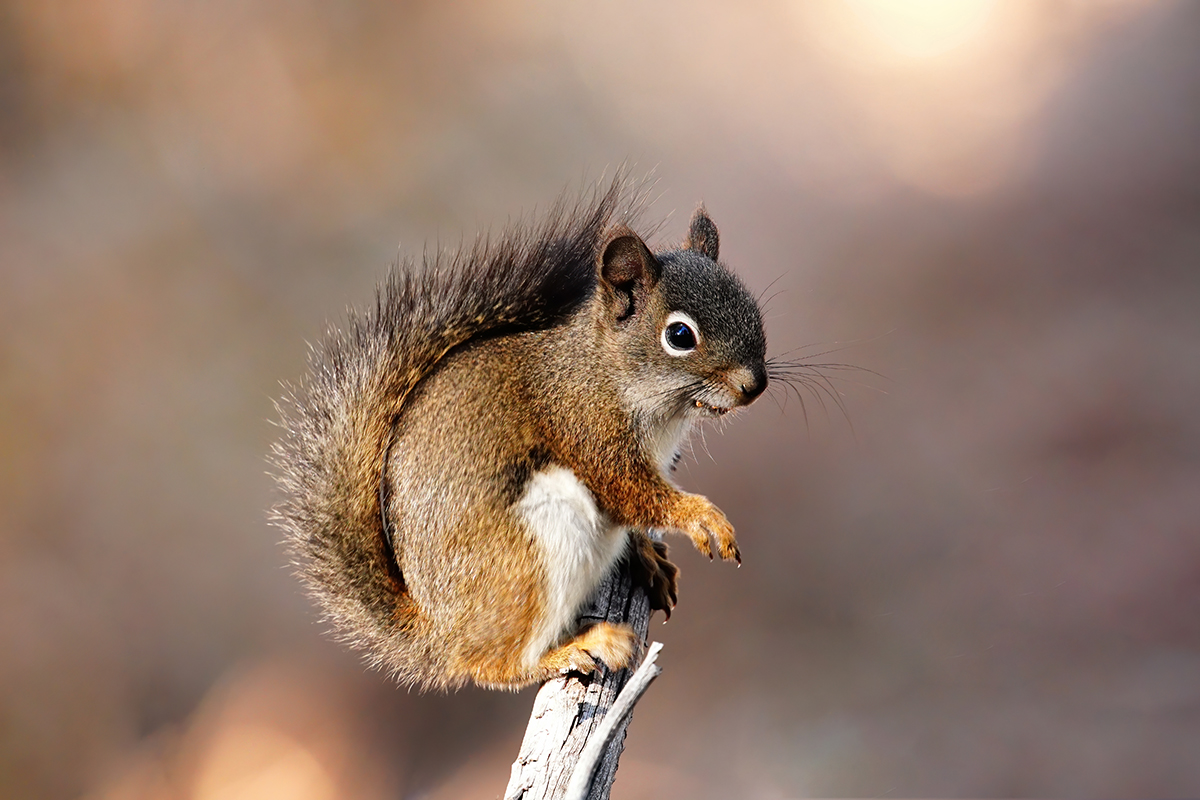
Conseils pour photographier la faune commune :
- Recherchez des poses intéressantes et un contact visuel direct.
- Concentrez-vous sur la séparation de l'arrière-plan pour obtenir des photos nettes et riches en effets de flou.
- Traitez tous les sujets, même les plus courants, avec le même soin et la même patience.
Réflexions finales : Pourquoi le Tamron 150-500mm est mon objectif de prédilection pour les animaux sauvages
Après des années d'expérience en tant que photographe professionnel et organisateur de voyages photo, je peux affirmer en toute confiance que le Tamron 150-500 mm offre constamment les performances nécessaires pour obtenir des images exceptionnelles de la faune et de la flore.
Sur mon boîtier Sony plein format ou APS-C (où il devient un équivalent 225-750 mm !), il fournit :
- Mise au point rapide comme l'éclair
- Des détails précis
- Ergonomie confortable pour les longues journées sur le terrain
Avec ces conseils pour la photographie animalière avec le Tamron 150-500 mm, j'espère que vous vous sentirez inspiré pour sortir à l'extérieur et capturer vos propres moments inoubliables. Le printemps arrive à grands pas, et avec lui les bébés animaux qui ne demandent qu'à être photographiés !
En savoir plus sur photographie animalière dans le numéro 14 du magazine TAMRON. Pour en savoir plus sur le Tamron 150-500mm disponible pour les appareils photo sans miroir Sony E-mount, Fujifilm X-mount et Nikon Z-mount, trouvez un numéro de TAMRON Magazine. revendeurs Tamron agréés dans votre région ou visitez le site Magasin TAMRON aujourd'hui.
Pour voir d'autres travaux de Don Mammoser, visitez son site web. site web, YouTube ou Instagram.